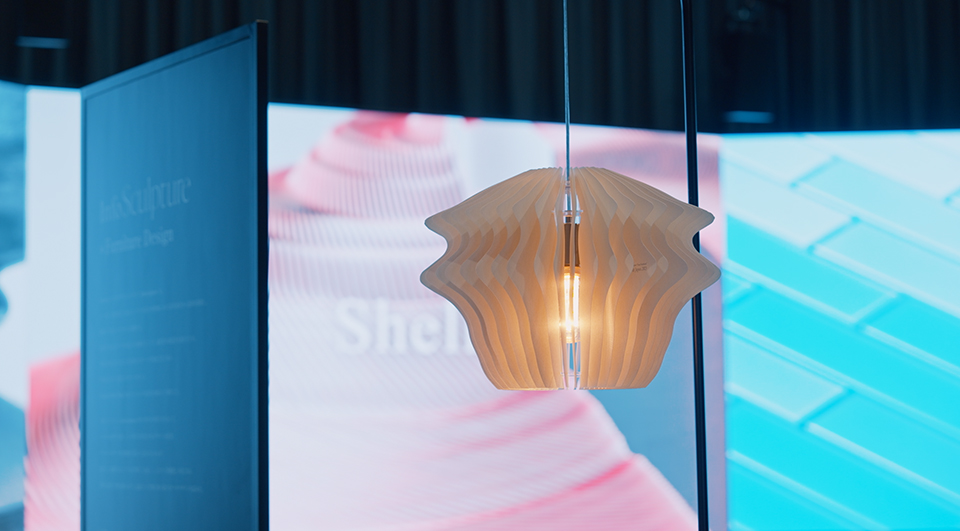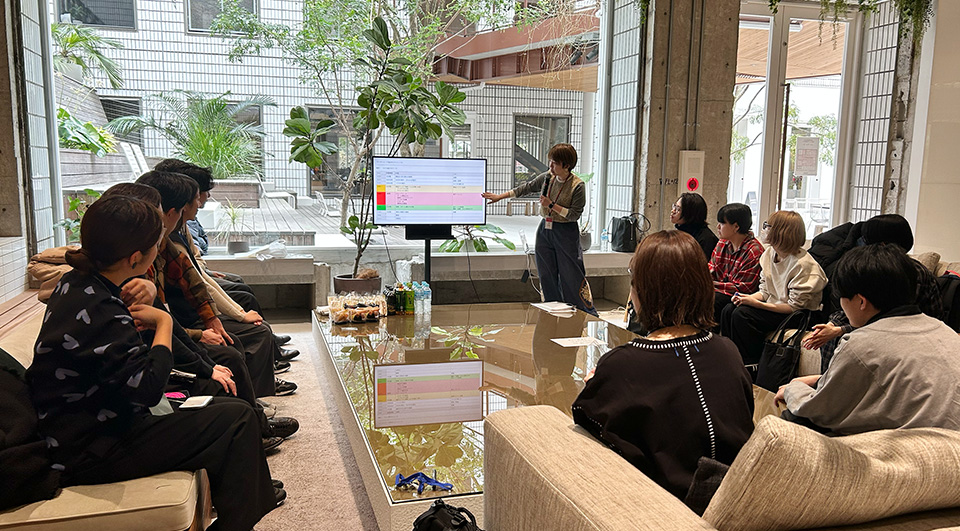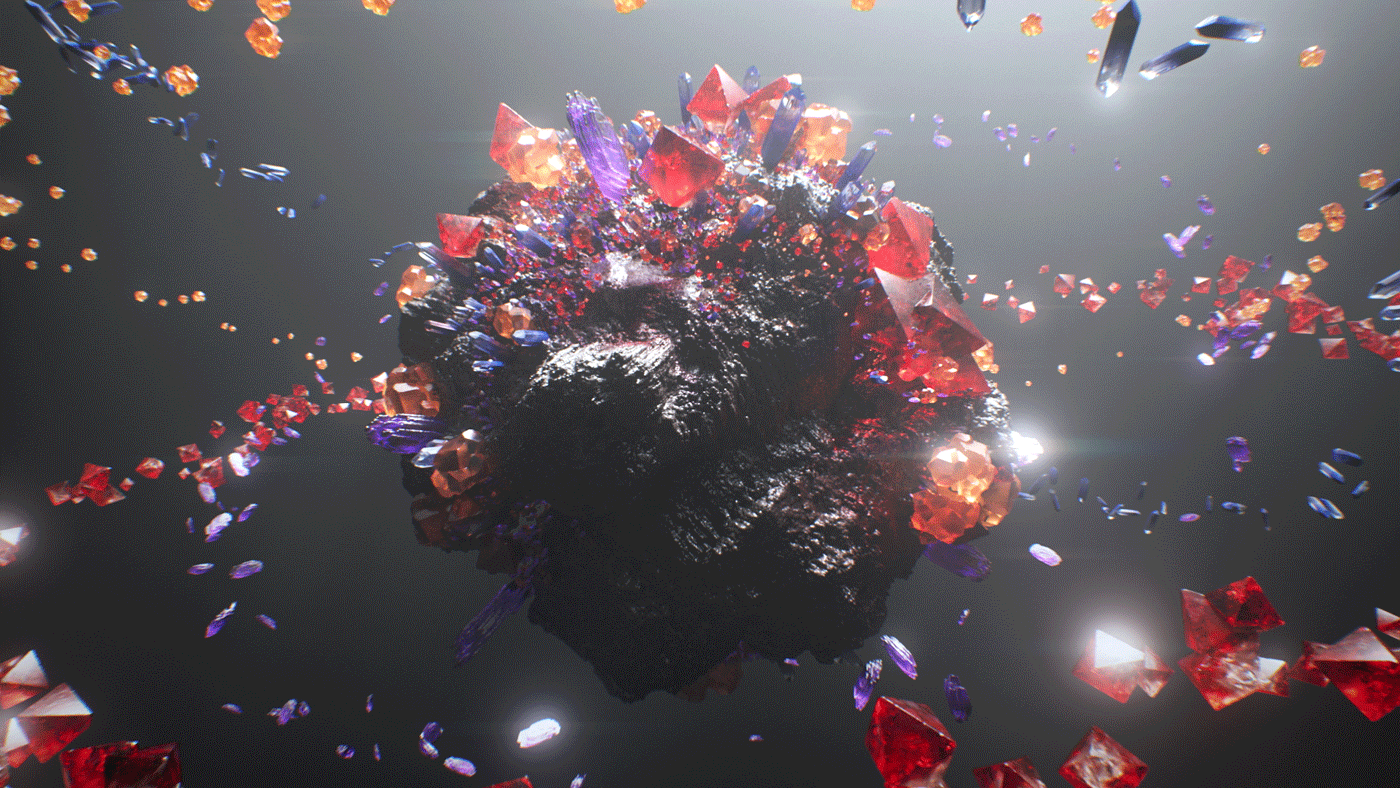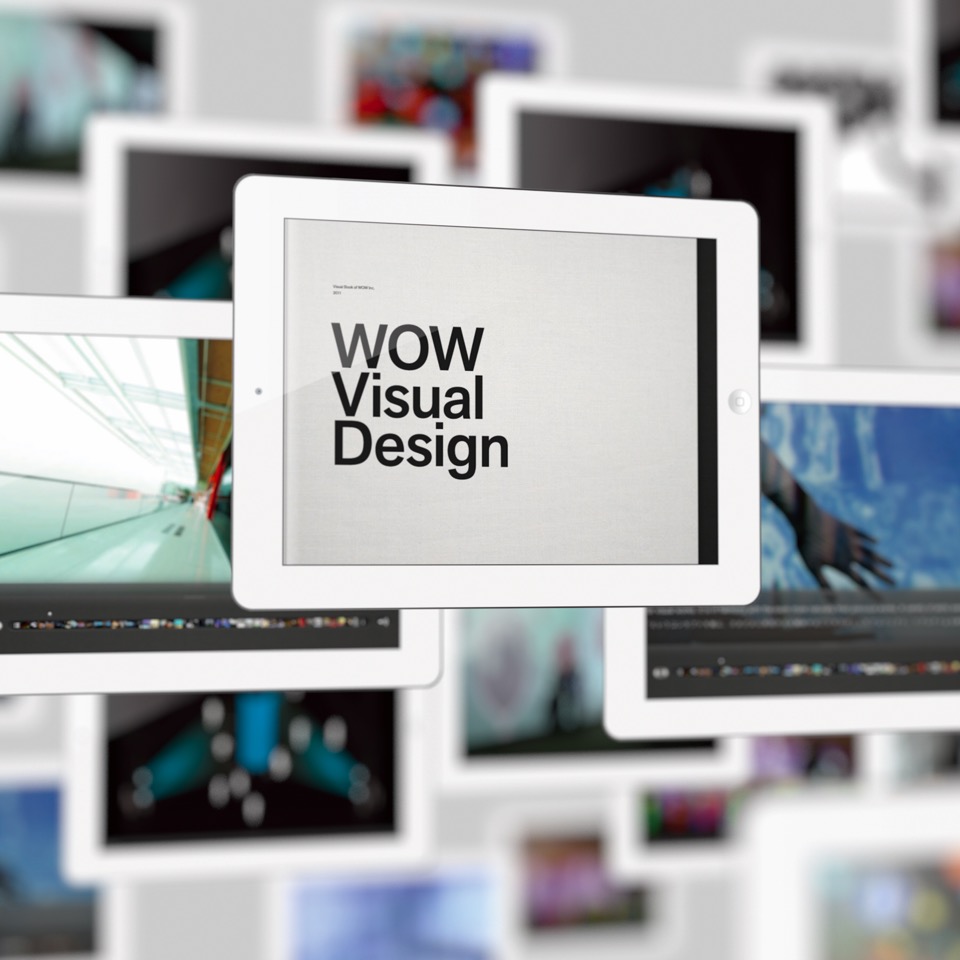Credits
Director / Designer / Conceptor : Takeshi Funatsu
Art Director / Designer / Planner : Saki Kato
Graphic Designer : Mayu Kobayashi
Programmer : Yuya Umeta
CG Designer : Takuma Sasaki, Hironobu Sone
Music : Masato Hatanaka
Shooting / Edit : Daisuke Moriwaki
Producer : Shinichi Saeki
Project Manager : Ryoma Yamashita
2.5D Printing : Ricoh Co., Ltd.
Lenticular Printing : SHOEI, Inc.
Lampshade Craft (Paper) : Fukunaga Print Co.,Ltd.
Design Cooperation / Construction : OGATA Inc.
Polymorphism of Information
About the Exhibition
“Polymorphism of Information” was held at THE CAMPUS (Kokuyo Tokyo Shinagawa Office) from March 18th (Monday) to March 22nd (Friday), showcasing a collection of video and other works that have all been born from WOW’s InForms project. Through this exhibition visitors were able to appreciate the works (data) and share insights gained from them with others, deepening understanding, gaining new perspectives, and proposing possibilities for new data design.
Organizer and Operator: WOW
Co-Organizer: KOKUYO
Concept
Focusing on the two themes of rare metal production volumes and global population, Polymorphism of Information presented video works that use modeling and visuals generated from open data, together with works derived from and inspired by these themes in formats not confined to video.
The concept for the exhibition was “design of polymorphism," combining the process of expanding and enhancing the visual representation of data through 3DCG with the reconstruction of information forms by seeking to disentangle them from the outer framework of visual media, something that WOW has been working on in its ongoing exploration of the role of visual design in relation to social themes.
The spatial and temporal flexibility possessed by 3DCG and the sense of reality it provides, serves to restore texture to data and enables the incorporation of vast quantitative and temporal data into modeling. The process of returning digital modeling and visuals to physical “things,” consigns “permanence” of data to the time it takes for “things” to decay, and transforms the accessibility of data, giving it a solid quality as something “out there.” What is more, this process of “making things tangible” also helps us to see new perspectives in data design, such as “permeation” into the living space through aesthetic visualization, and a “sense of proximity” with humans that is created by mimicking everyday objects.
In today’s world, where the significance of collecting data is widely recognized, where does the all collected data go? In addition to being utilized as a tool for optimization and convenience and its attribution to the vast collective knowledge that is AI, data design helps to describe the reality of the events that have taken place, blending flexibly around people and in spaces. This project explores the new possibilities that visual design can contribute, so that rather than being buried in vast amounts of data, we can broaden our perspectives and understand society in more granular detail.
About the Works
Work 01 - InfoTexture × Lenticular & 2.5D Printing
The design concept of “InfoTexture” in InForms is to incorporate the “texture” that the data had in the real world into the data visualization element. This data visualization method still retains the basic function of data to convey distribution change, and difference, while also incorporating quantitative and qualitative information such as context, background, and real world materiality. Using CG visuals created based on rare metal production data, we combined the “texture” created by InfoTexture with printing techniques to explore expressions that are not confined to purely the visual.
Lenticular printing highlights the relationship between visuals and data through the simple interaction of changing perspectives. We expressed the multiplicity of visual representation in InForms, where beauty influences people’s interests and memory, and beyond that lies thinking and interpretation, all within the medium of a single poster. We also used 2.5D printing technology to enhance the beauty of the texture in the form of pictorial works, and in so doing created art pieces with a powerful presence in the exhibition space. We proposed a design for “feeling” data.
Data Source
U.S. Geological Survey, 2023, Mineral commodity summaries 2023,
Work 02 - InfoSculpture × Furniture Design
The design concept of “InfoSculpture” in InForms is to view data as “sculptural elements,” transforming shape manipulation in visualization—including selections of graph shapes and coordinate axes—into a purely “sculptural” process that eliminates intentions. This data visualization method aims to stimulate the creativity of the viewer and provide a multi-faceted perspective on a particular task, by expanding the ways in which data is viewed from a sculptural perspective. In video works, four sculptures, namely Pyramid/Shell/Brick/Fur, were created using 3DCG based on world population data.
This exhibition also sought to propose designs that use the multiplicity of shapes InfoSculpture provided and make these real in the form of “furniture.” Data on a server is doomed to be forgotten unless actively viewed, but by making it resemble furniture, it “permeates” the living space and gains a closer sense of “proximity” with people. What we attempted to do was engage in data design that remains in one space as a record, while decorating another space in a variety of forms.
Data Source
- United Nations, Department of Economic and Social Affairs, Population Division
(2022). World Population Prospects 2022, Online Edition.
- World Bank national accounts data, and OECD National Accounts data files.
Work 03 - InfoSculpture × Furniture Design
We created an application to enable viewers to interactively manipulate the shapes created in InfoTexture and InfoSculpture video works, making it possible to appreciate them freely from various perspectives.
Video and also pre-rendered CG are media with a fixed timeline, and while these are very good for telling a story and make a strong and long-lasting impression with their vivid forms of visual expression, what became apparent to us in the production process was that it can also be difficult to impart an understanding of in-depth details. InForms presents an approach to information communication based on the perspectives and interests of each viewer, through which the experience of “feeling” data through visuals and the experience of “understanding” details are mutually interwoven, while also disentangling the relationship between data and visuals.
Work 04 - Ideation Workshop
WOW and KOKUYO held a joint Ideation Workshop to come up with creative ideas using data, welcoming about 15 participants of mostly young employees from the two companies. The presentation boards on display at the exhibition were the actual ideas that emerged from each team at the workshop. WOW produces a variety of works focused on forms of visual expression, but this exhibition explored the polymorphism of data visuals in the form of posters and products. By incorporating ideas and concepts from other fields we believe it is possible to develop further forms of expression. You can expect to see more from us as we continue our creative journey.
▶︎ Exhibition Web Site
Credits
Director / Designer / Conceptor : Takeshi Funatsu
Art Director / Designer / Planner : Saki Kato
Graphic Designer : Mayu Kobayashi
Programmer : Yuya Umeta
CG Designer : Takuma Sasaki, Hironobu Sone
Music : Masato Hatanaka
Shooting / Edit : Daisuke Moriwaki
Producer : Shinichi Saeki
Project Manager : Ryoma Yamashita
2.5D Printing : Ricoh Co., Ltd.
Lenticular Printing : SHOEI, Inc.
Lampshade Craft (Paper) : Fukunaga Print Co.,Ltd.
Design Cooperation / Construction : OGATA Inc.
Related
- All
- Installation
- Motion Graphics
- Architecture
- Product
- App
- Exhibition
Art
Biography
WOW is a visual Design Studio founded in 1997 based in Tokyo, Sendai, London and San Francisco.
SOLO EXHIBITIONS
- 2019
-
Tokyo Light Odyssey|JAPAN HOUSE London, UK
POPPO (YADORU, ROKURO, POPPO’s Forest)|JAPAN HOUSE London, UK
BAKERU: Transforming Spirits|JAPAN HOUSE Los Angeles, USA
- 2018
-
WOW Visual Design Studio ー WOW animates the world|Spiral, Japan
- 2017
-
POPPO Exhibition|Manabia Terrace, Japan
Beyond Cassini|hpgrp GALLERY NEW YORK, USA
Hare to Ke Exhibition|Sendai Mediatheque, Japan
- 2015
-
UNITY of MOTION|Hyundai Motorstudio Seoul, Korea
- 2013
-
Factory and Fantasy|21st Century Museum of Contemporary Art, Japan
- 2012
-
Factory and Fantasy|Sapporo Underground Space Station Road, Japan
GROUP EXHIBITIONS
- 2019
-
motion texture 02|Art+Tech Summit at Christie’s: The A.I. Revolution, New York, USA
Emerge|Reborn-Art-Festival, Japan
motion texture 02|Roppongi Art Night, Japan
wind form_02, UNITY of MOTION|BAY ART, China
YADORU|Media Ambition Tokyo, Japan
- 2017
-
floating anima_01|Reborn-Art Festival, Japan
- 2016
-
Tokyo Light Odyssey|New Style New Artist, Intercommunication Center, Japan
- 2010
-
Snow Drops|Sendai Mediatheque, Japan
Factory and Fantasy|Design Act 2010, Russia
Factory and Fantasy|Kawasaki Dreaming Highway, Japan
Tengible|MIGZ, Russia
Tengible|VINCON Gallery, Spain
Light Rain|Decode: Digital Design Sensations, CAFA Art Museum , Beijing, China
- 2009
-
Factory and Fantasy|Miyagi Art Museum, Japan
Lights and Shadows|Tent Digital, UK
Light Rain|Decode: Digital Design Sensations, Victoria and Alvert Museum, UK
- 2008
-
Lights and Shadows|Wonder Exhibition Milano Salone, Italy
- 2007
-
Tengible|DesignTide, Miyagi Art Museum, Japan
Tengible|Tent London, UK
- 2006
-
motion texture|Miraikan, Japan
motion texture|Sendai Mediatheque, Japan
PROJECTS
- 2019
-
aikuchi|Marc Newson at Gagosian West 21st Street, NY, USA
- 2016
-
KOHTEI|Shinshoji Zen Museum and Gardens, Japan
- 2014
-
Ophelia has a Dream|Media Ambition Tokyo, Japan









































































































































